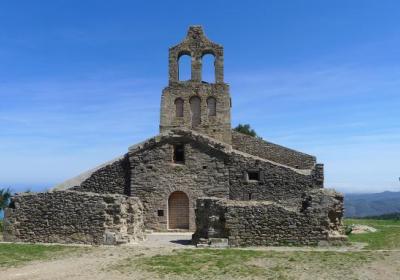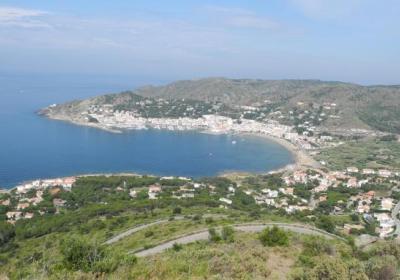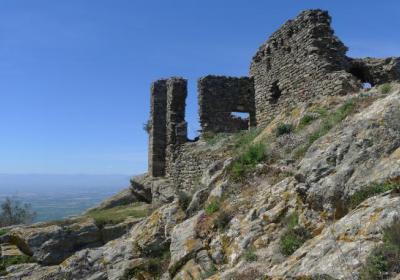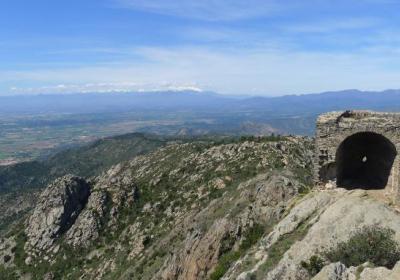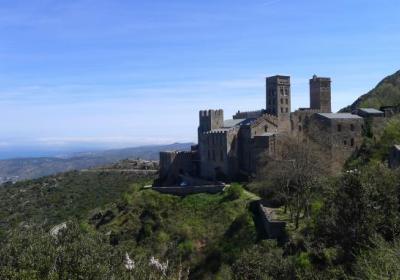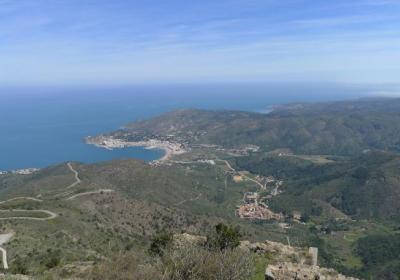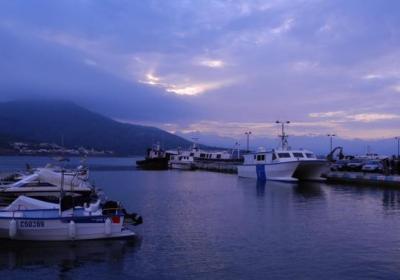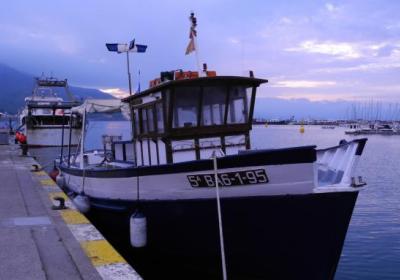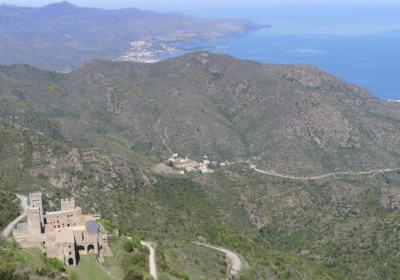The second phase of the Trans-Pyrenees Crossing offers a wonderful combination of classic Mediterranean sea and mountain landscapes. During the first sector of the stage you will climb to the extraordinary Benedictine monastery of Sant Pere de Rodes, one of the jewels of Catalan Romanesque. After admiring this magnificent building, you will head down to Llançà, where you will say goodbye to the Mediterranean waters that have accompanied you during the first two days of the crossing. Lastly, you will leave behind the Mediterranean and the Cap de Creus Peninsula and come to Vilamaniscle, a beautiful village where you can discover the great wine tradition of Empordà.
Considerable. Derived from the length and ascent to overcome. This stage does not have any technical difficulties.
No special equipment required.
Cap de Creus. 1:25.000. Editorial Alpina.
Alt Empordà. 01:50.000. Editorial Alpina.
Topographic base of Catalonia 1:25.000. Geological and Cartographic Institute of Catalonia (ICGC).
Let's begin the second stage of the Trans-Pyrenees Crossing (1) Port de la Selva (0:00 - 5m). You will follow the bay along the sea, first in the port area and then by the Platja Gran. This section runs along the long Catalan section of the GR 92 path, which stretches all along the Mediterranean coast from Portbou to Ulldecona. When you reach the turnoff to the Selva de Mar road, leave behind the sea and Llançà road and turn left (S) in the direction of Selva de Mar. Follow the road just before reaching a sports facilities, where you will take a path that goes perpendicular to the road and that surrounds the facilities. Follow the white and red GR markers to (2) Selva de Mar (0: 50 - 60m). This small town was once the largest in the area and Port de la Selva was just the Selva de Mar fishermen port.
Now we approach the ascent to Sant Pere de Rodes. Just as you leave Selva de Mar you will pass by the San Sebastian Chapel, which looks more like a castle due to the battlements that crown its walls. The road zigzags up to overcome the steep slopes. This is the first really demanding climb in the Trans-Pyrenees Crossing. Finally you reach the parking lot east of the monastery and follow a trail that first goes around the monastery below and then reaches the main gate (3) Sant Pere de Rodes Monastery (2:00 - 510m), one of the great examples of Catalan Romanesque, which should not be missed.
Leave the monastery behind and continue the crossing towards the NW. Pass by the St. Helena chapel, which is on your left and cross the road. Start slowly down the ridge towards Llançà. In this section you will enjoy spectacular views of the Empordà plain, the Albera Mountains and the high mountains of the eastern Pyrenees. Pass by the (4) Perer Hill (2:45 - 356m) and take the last descent towards the town of (5) Llançà (3:30 - 10m), the second and last fishing village that you will pass by during the Trans-Pyrenees Catalan sector.
Leave Llançà crossing the access road towards the village and the railway. Continue onto a wide trail that climbs gently through a mountain ridge. You will walk in an area that is very exposed to the sun where it is difficult to find some shade. Gradually you will ascend and reach (6) Portes Hill (4:30 - 230m) where you will find a fork in the road. Look back to admire the blue sea for the last time and keep going on the trail that continues straight ahead. First continue on flat terrain and then start down the western slope of the mountain. We reach a point where you leave the trail and take a path that descends directly to Sant Silvestre de Velleta (4:50 - 118m), a beautiful Romanesque chapel dating from the 10th century that consists of a rectangular nave and a semicircular apse.
Resume the path that goes up a few meters westwards and that puts you once again on the dirt trail. Continue on this trail keeping an eye on the red and white markers in the various crossroads you will encounter until reaching (8) Serra Hill (5:35 - 258m). At this point, take the trail that smoothly descends towards the NW end of Quirc Hill and the town of (9) Vilamaniscle (6:00 - 155m). This beautiful little town is situated at the foot of the Albera Mountains, which you will take in the following stages of this crossing, a town recognized for the quality of its olive and vine crops. We recommend enjoying this tradition, and if you have the opportunity, try the wines and olive oil that are produced in the village.
The wonderful views to enjoy during the descent from Sant Pere de Rodes to Llançà.
The sharp contrast between the sea and the mountain scenery of the Rodes Mountains.
Discover the Sant Pere de Rodes Monastery.
Get to know the wine-making tradition of the beautiful Empordà town of Vilamaniscle.
Selva de Mar was so named because forest had previously covered almost everything in the area? It was then under the influence of the monks of the Sant Pere de Rodes Monastery that the vineyards and the olive tree started to gain ground and spread even to the hills. In the 19th century, phylloxera and heavy frost seriously affected these crops and many fields were abandoned.
The beautiful Romanesque monastery of Sant Pere de Rodes. The first written reference to the monastery dates back to the year 878, but it was not until the year 947 that it became an independent Benedictine abbey. The monastery had a great vitality until the 14th century and then it went into a long decline until it was finally abandoned. It has now been beautifully restored (more information: 972 387 559, santperederodes.cultura@gencat.cat).
The route for this stage is very exposed to the sun and shade is scarce. If the weather is good and you have plenty of energy, from the Sant Pere de Rodes Monastery you can go up to the panoramic castle of Sant Salvador de Verdera (682m), the highest point of the Cap de Creus peninsula (round trip: 1.6 km, 0:35).

